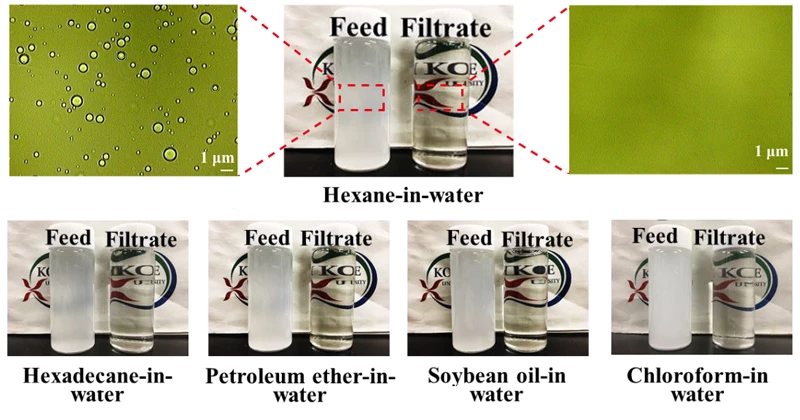Although we've seen a number of materials that are designed to remove oil from water, many of these soon become saturated, and have to be discarded. A new reusable membrane gets around this problem, however, by repelling oil instead of just soaking it up.
The positively-charged base of the membrane is made out of tiny polyketone fibers (polyketones are a family of thermosplastic polymers). This substrate is very porous, allowing water to easily flow through.
Onto one side of the base, a negatively-charged coating of silica is applied. That layer is just 10 nanometers thick and it's superoleophobic, meaning that it repels oil. Additionally, because it and the base are oppositely-charged, they're drawn together via the process of electrostatic attraction.
Once placed in flowing water with the silica facing upstream, the membrane is reportedly able to repel 99.9 percent of oil droplets, even those as small as 10 nanometers in diameter. And while oil still does accumulate against the surface of the membrane – where it can be collected for reuse or disposal – it isn't actually adsorbed by the material, so it can quickly and easily be cleaned off.

In lab tests, a piece of the membrane measuring 1 square meter (10.8 sq ft) was able to treat 6,000 liters (1,585 US gal) of oil-tainted water in less than an hour, under an applied pressure of 1 atmosphere. Additionally, the material was shown to be very tolerant of a variety of acidic, alkaline, solvent and salt solutions.
It is now hoped that once developed further, the technology could find use in applications such as the cleaning up of oil spills at sea, and the treatment of wastewater.
A paper on the research, which was led by professors Matsuyama Hideto and Yoshioka Tomohisa, was recently published in the Journal of Materials Chemistry A.
Source: Kobe University




